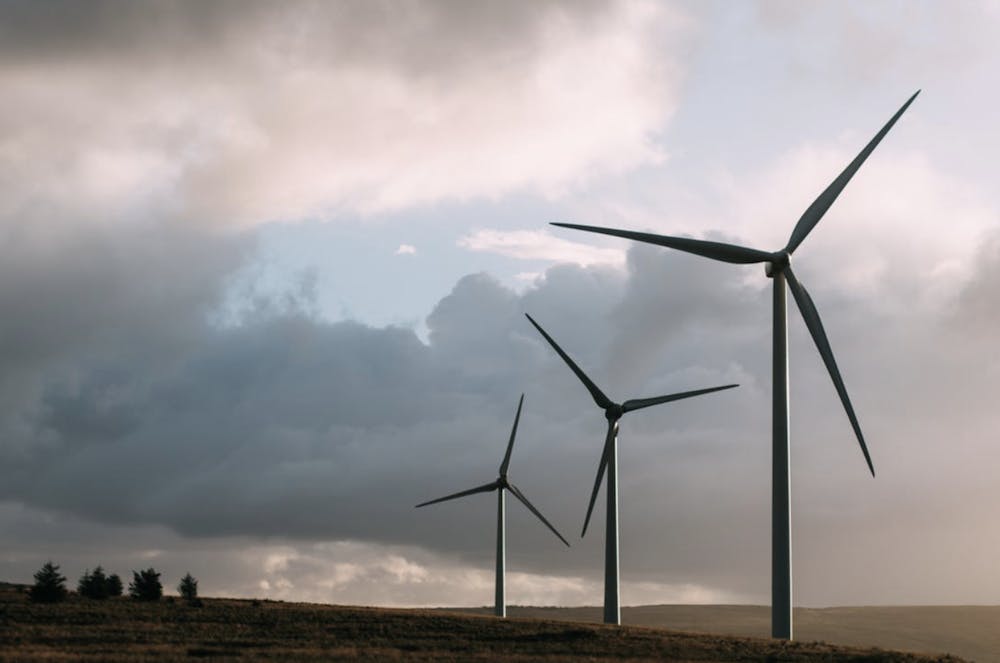To the surprise of climate scientists, our world is getting significantly windier. Average daily wind speeds have picked up in the last decade after over 30 years of gradual decline, according to research led by a team at the University’s Department of Civil and Environmental Engineering. The study, published in “Nature Climate Change” on Nov. 18, could implicate a dramatic surge in the efficiency of wind power in the coming years.
The findings demonstrate a recent reversal to decreasing wind speeds over land — a phenomenon termed “global terrestrial stilling.” The trend began in 1978. Since 2010, however, wind speeds have accelerated by approximately seven percent. This speed increase is three times faster than the rate of the previous slowing. As a result of this shift, wind turbines can produce 17 percent more energy now than they did a decade ago; the research team predicts a 37 percent increase in energy production by 2024.
Zhenzhong Zeng, the first author on the paper, was a postdoctoral fellow in the lab of Eric Wood, the Susan Dod Brown Professor Emeritus of Civil and Environmental Engineering, when he conducted this research. Zeng is now an associate professor of environmental studies at the Southern University of Science and Technology in Shenzhen, China.
Zeng explained that wind speed on a daily basis is dictated by pressure patterns in the atmosphere, but scientists are not sure of the cause of these larger trends. The scientific community suggested two main hypotheses to explain the stilling: increased surface roughness, caused by greening and urbanization, and global warming reducing temperature gradients and affecting pressure differentials.
“If the hypotheses were right, the stilling would continue …. The wind speed reversed in 2010, but the roughness did not reverse, and global warming did not reverse,” Zeng said. “Our paper is the first to show that those hypotheses cannot be correct.”
Instead, Zeng and his team proposed that naturally occurring ocean-atmosphere oscillations were the cause of this change, which had been previously understood to only affect ocean winds.
The 17 percent increase in energy production from wind turbines, previously credited to technological innovation, was in fact largely due to this reversal of speed patterns, Zeng contended.
“A big thing that came out of this finding is that the change in wind energy production is not just technology,” Zeng said. “Our understanding of the natural science is just as important.”
Adrian Chappell, from Cardiff University’s School of Earth and Ocean Sciences, was a co-author on the paper. He spoke to Bloomberg about the recent publication, emphasizing its importance for wind power.
“This rapid increase in global wind speeds is certainly good news for the power industry,” Chappell said. “[The reversal] bodes well for the expansion of large scale and efficient wind power generation systems.”
Professor Wood also mentioned the value of this finding to the planning of wind energy infrastructure.
“If the wind is too strong or too weak, it’s not good for the turbines … If you have [a turbine] built already, it’s just about monitoring,” Wood said. “But if you’re trying to decide where to build new wind farms, you want to know about this.”

Both Wood and Zeng anticipate that their paper could help promote the replacement of the burning of fossil fuels with cleaner alternative energy sources. With such a large predicted uptick in efficiency, wind power may soon see a surge in usage.
Though the data from the past decade suggests strongly that wind speeds will continue to rise for the next ten years, the nature of atmospheric data prevents scientists from making definite claims. Wood noted the limitations of the data’s ability to predict exact trends going forward.
“Our data is maybe 20 or 30 years old. We don’t know, 100 or 200 years ago, what these longer-term trends look like. That’s one of the problems with this: Climate data should be long enough that you can actually see what is happening, but unfortunately, most of this is measured by satellite, so it is too short a record.”
Zeng plans to continue his work on wind turbines in China, focusing on both onshore and offshore energy production. He is also interested in looking into the effects of this reversal on other climate phenomena, such as evaporation, sandstorms in Beijing, and air pollution. Wood also discussed his hopes that this finding could be utilized for studies beyond wind energy.
“Wind affects lots of things,” said Wood. “Look at the patterns of wind storms in the past year, what does it mean for power outages … and it helps the little kids fly their kites.”








